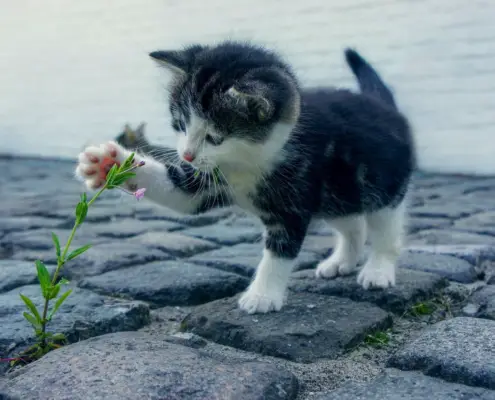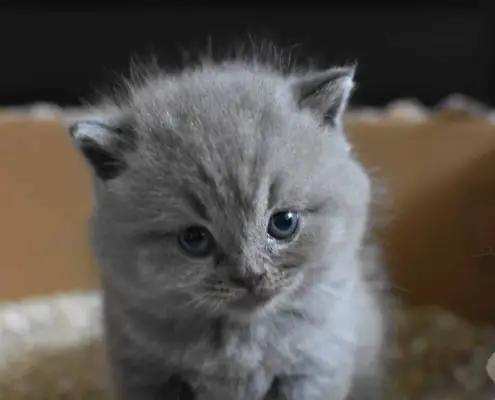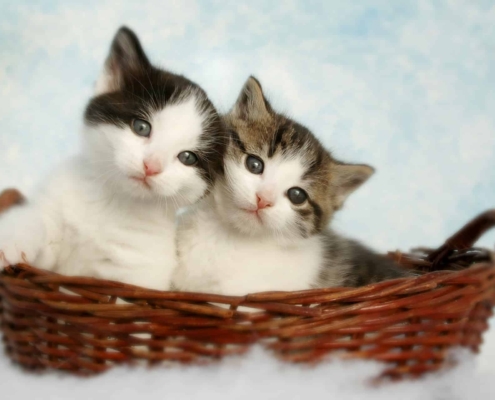
Cats are fascinating creatures, and one of their intriguing behaviors is yawning. But have you ever wondered why cats yawn? Yawning is not just a sign of tiredness or boredom in felines; it actually serves several purposes. Understanding the science behind cat yawning can provide valuable insights into your furry friend’s well-being.
Yawning is a reflex action that involves the simultaneous opening of the mouth and the intake of a deep breath, followed by a slow exhalation. This action helps regulate the temperature and oxygen levels in the cat’s brain, while also stretching the muscles and joints in their face and jaw. It is believed that yawning helps cats stay alert and focused, especially after periods of inactivity.
Recent studies suggest that yawning also plays a role in cooling down the brain. When cats yawn, they increase the blood flow to their brains, which helps regulate its temperature. This is particularly important for cats, as their brains can overheat easily due to their high metabolic rate. So, the next time you see your cat yawning, remember that it’s not just a simple act but a fascinating physiological response.
Common misconceptions about cat yawning
Despite its scientific explanations, cat yawning is often misunderstood. One common misconception is that cats yawn solely because they are tired or bored. While fatigue can be a contributing factor, it is not the only reason. Cats yawn for various reasons, including relaxation, communication, and even as a response to stress.
Another misconception is that yawning in cats is contagious, just like in humans. However, research has shown that cats do not yawn in response to seeing another cat or human yawn. Instead, they yawn primarily as a self-regulatory mechanism to maintain their brain’s optimal functioning.
Understanding these misconceptions can help you interpret your cat’s yawning behavior more accurately. It’s essential to look beyond the surface and consider the underlying reasons behind your cat’s yawns.
The evolutionary purpose of cat yawning
Yawning is not unique to cats; it is a behavior observed in many species, including humans. From an evolutionary standpoint, yawning serves a purpose that goes beyond physical needs. In the animal kingdom, yawning is thought to have originated as a way to communicate and synchronize behavior among group members.
In the case of cats, yawning can serve as a subtle form of communication between individuals. It can signal relaxation and contentment, which is crucial for maintaining social bonds within a group. Yawning can also indicate a sense of trust and security in their environment.
Additionally, yawning may have evolved as an instinctive response to prepare the body for certain activities. For example, before hunting or engaging in play, cats may yawn to increase their alertness and focus. By doing so, they ensure they are fully prepared for the task at hand.
Understanding the evolutionary purpose of cat yawning can deepen your appreciation for this behavior and provide insights into your cat’s social and emotional well-being.
Yawning as a sign of relaxation in cats
Cats are known for their ability to relax and unwind, and yawning is an integral part of their relaxation process. When cats yawn, it indicates that they are in a state of calmness and contentment. Observing your cat yawn can be a reassuring sign that they feel safe and secure in their environment.
Yawning in cats is often accompanied by other relaxation signals, such as slow blinking, stretching, and grooming. These behaviors collectively create a peaceful and harmonious atmosphere for your feline companion. It’s important to provide your cat with a stress-free environment that promotes relaxation and allows them to unwind comfortably.
Creating a serene environment can include providing comfortable resting spots, engaging in interactive play sessions, and maintaining a consistent routine. By prioritizing your cat’s relaxation needs, you can contribute to their overall well-being and happiness.
Yawning as a form of communication in cats
Cats are known for their non-verbal communication skills, and yawning is one of the ways they express themselves. When a cat yawns, it can convey various messages, depending on the context and accompanying behaviors.
In social situations, cats may yawn as a way to signal their non-threatening nature and to diffuse tension. Yawning can be a form of appeasement behavior, indicating that the cat is not a threat to others and is willing to engage in peaceful interactions.
On the other hand, excessive yawning in certain situations can indicate stress or anxiety in cats. If your cat yawns excessively or in situations where they feel uncomfortable, it’s crucial to assess their environment and identify any potential stressors. Providing a safe and calm space for your cat can help alleviate their anxiety and reduce excessive yawning.
Health implications of excessive yawning in cats
While yawning is a normal behavior in cats, excessive or frequent yawning can sometimes indicate underlying health issues. It’s essential to monitor your cat’s yawning patterns and seek veterinary advice if you notice any significant changes.
Excessive yawning can be a sign of respiratory problems, such as asthma or allergies. It can also indicate dental issues or pain in the jaw area. Regular dental check-ups and providing appropriate dental care can help prevent dental problems that may contribute to excessive yawning.
Additionally, certain medical conditions, such as anemia or heart disease, can manifest as excessive yawning in cats. If your cat’s yawning is accompanied by other symptoms like lethargy, loss of appetite, or difficulty breathing, it’s crucial to consult a veterinarian for a thorough examination.
How to differentiate between a yawn and other cat behaviors
Cat behaviors can sometimes appear similar, making it challenging to differentiate between a yawn and other actions. However, there are subtle cues that can help you identify a genuine yawn in your cat.
A yawn is typically characterized by a wide opening of the mouth, stretching of the jaw muscles, and a deep inhalation followed by a slow exhalation. It is often accompanied by a slight squinting of the eyes and a relaxed body posture. Paying attention to these specific behavioral cues can help you distinguish a yawn from other cat behaviors, such as vocalizations or grooming.
By understanding the distinct characteristics of a yawn, you can better interpret your cat’s behavior and respond appropriately.
Tips for promoting a healthy and stress-free environment for your cat
Creating a healthy and stress-free environment is crucial for your cat’s overall well-being and can have a significant impact on their yawning behavior. Here are some tips to help you promote a serene and harmonious environment for your furry companion:
- Provide a designated space for your cat to retreat and relax. This can be a cozy bed or a quiet room where they can escape from any disturbances.
- Establish a consistent routine for feeding, playtime, and rest. Cats thrive on routine, and having a predictable schedule can help reduce stress and promote a sense of security.
- Engage in interactive play sessions to satisfy your cat’s natural hunting instincts and provide mental stimulation. This can include using toys that mimic prey or engaging in gentle play with your cat using a wand toy.
- Ensure your cat has access to fresh water and a balanced diet. A healthy diet plays a crucial role in your cat’s overall well-being and can contribute to their relaxation and contentment.
- Minimize exposure to stressful situations or triggers. Cats are sensitive to changes in their environment, so maintaining a consistent and calm atmosphere can help reduce their stress levels.
By implementing these tips, you can create an environment that promotes your cat’s health, happiness, and overall well-being.
Understanding your cat’s individual yawning patterns
Just like humans, cats have unique personalities and preferences. Understanding your cat’s individual yawning patterns can help you connect with them on a deeper level and recognize any changes in their behavior.
Observe your cat’s yawning frequency and accompanying behaviors in various situations. Pay attention to the context in which they yawn, such as when they are relaxed, after playtime, or in unfamiliar environments. This can provide valuable insights into their emotional state and help you gauge their comfort level in different situations.
By becoming attuned to your cat’s individual yawning patterns, you can develop a stronger bond and provide them with the care and support they need.
The importance of paying attention to your cat’s yawning behavior
From boredom to bliss, cat yawning reveals fascinating insights into their well-being. Yawning serves multiple purposes, including regulating brain temperature, communicating relaxation, and even diffusing tension in social situations. By understanding the science, misconceptions, and evolutionary significance of cat yawning, you can better interpret your feline companion’s behavior.
Paying attention to your cat’s yawning patterns and accompanying behaviors is essential for maintaining their health and happiness. Excessive or frequent yawning can indicate underlying health issues, stress, or anxiety. Creating a healthy and stress-free environment, providing proper veterinary care, and observing your cat’s individual yawning patterns can contribute to their overall well-being.
So, the next time you see your cat yawn, take a moment to appreciate the complexity and significance of this seemingly simple behavior. It’s a window into their world and a reminder of the love and care they bring into our lives.
If you enjoyed my article, I would appreciate you sharing it with your network.

Sima Ndlebe
Sima writes for CatBuzz. He is interested in Cats, Health and Fitness, and Entrepreneurship.
Published: 23 May 2024



